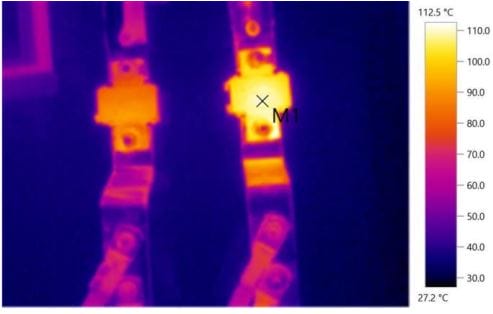Introduction
Welcome to the Elion Technologies and Consulting Private Limited blog. In this post, we’ll dive into the fundamentals of thermography audits and what you need to know to get started. Whether you’re a business owner looking to optimize your operations, a facility manager, or simply curious about the benefits of thermography audits, this article will serve as a comprehensive introduction to this valuable technology.

What is a Thermography Audit?
A thermography audit, also known as thermal imaging inspection, is a non-invasive technique that uses infrared cameras to capture temperature variations on the surface of objects or structures. These temperature variations are then converted into visible images, allowing you to identify anomalies that might not be apparent to the naked eye.
The Purpose of Thermography Audits
The primary purpose of a thermography audit is to detect and diagnose issues related to temperature and heat distribution. These audits are commonly used in various fields, including:
Electrical Inspections: Thermography audits can identify overheating electrical components, such as faulty connections, damaged wires, or overloaded circuits, reducing the risk of electrical fires.
Mechanical Systems: They are essential for identifying equipment and machinery anomalies that can lead to costly breakdowns or inefficiencies.
Building Envelopes: Thermography audits can locate energy leaks, insulation problems, and moisture infiltration in buildings, leading to energy savings and increased comfort.
The Benefits of Thermography Audits
Understanding the advantages of thermography audits is crucial. These benefits include:
Preventive Maintenance: By detecting issues before they become critical, thermography audits help in preventing costly breakdowns and downtime.
Enhanced Safety: Identifying electrical or mechanical problems early can prevent accidents and fires, ensuring the safety of your employees and assets.
Energy Efficiency: In building inspections, thermography can reveal areas where energy is being wasted due to poor insulation or air leakage, helping you save on energy costs.
Cost Savings: The cost of regular thermography audits is often outweighed by the savings generated through improved maintenance and energy efficiency.
Getting Started with a Thermography Audit
If you’re considering a thermography audit for your business or facility, here are the initial steps to take:
Select a Qualified Provider: Find a reputable thermography audit service provider with experience in your industry.
Plan the Audit: Work with the provider to determine the scope and objectives of the audit, and schedule the inspection.
Data Collection: During the audit, infrared cameras will capture thermal images of the targeted areas.
Analysis and Reporting: The collected data is then analyzed, and a detailed report is provided, highlighting any anomalies and recommended actions.
Conclusion
In summary, thermography audits are a powerful tool for maintaining the reliability, safety, and efficiency of your electrical, mechanical, or building systems. By understanding the basics and benefits of thermography audits, you’re well-equipped to make informed decisions about implementing these inspections in your organization. Stay tuned for more insightful articles from Elion Technologies and Consulting Private Limited as we explore further aspects of thermography audits and related topics.
Please visit www.elion.co.in, for any queries
